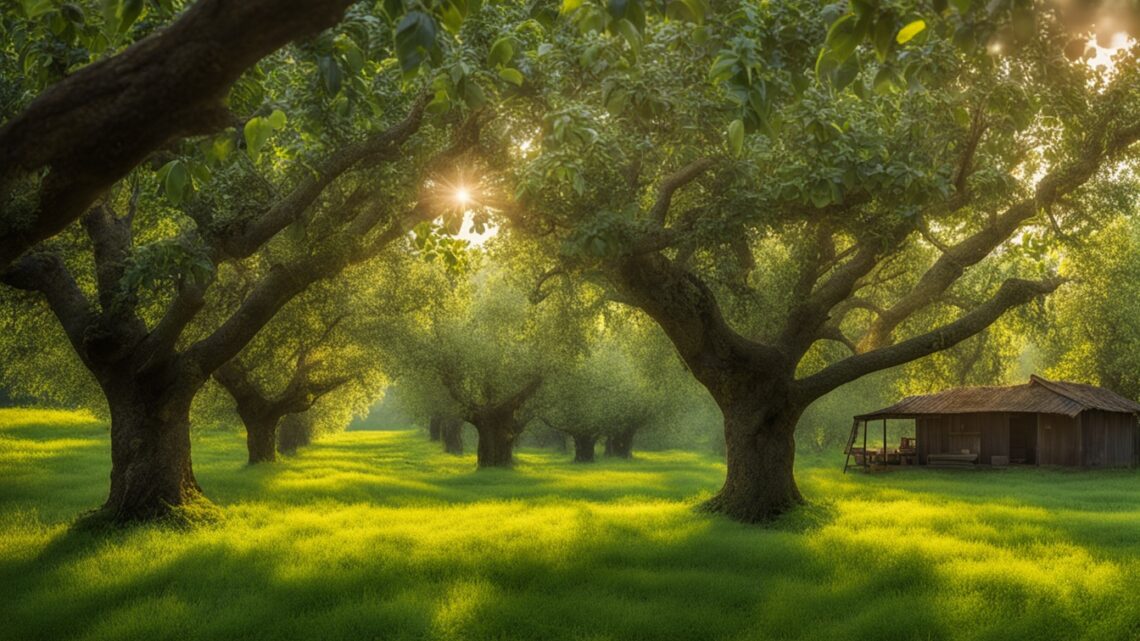
Are you eager to grow your own fresh fruit but unsure where to start? Don’t let the thought of maintaining a fruit tree scare you! Many varieties are easy to care for, even for beginners. We’ll show you the top five fruit trees that need little effort, helping you enjoy homegrown produce.
These trees are perfect for small backyards or if you’re new to growing fruit trees. They are low-maintenance and have special features like being disease-resistant or self-pollinating. We’ll highlight what makes these fruit trees great for beginners. Get ready to enjoy the fruits of your labor!
What Makes a Fruit Tree Good for Beginners
Choosing the right fruit tree for your garden is key to success. Look for low maintenance, resistance to disease and pests, and favorable climate.
Low Maintenance
If you’re new to gardening, pick a fruit tree that’s easy to care for. Apple, pear, and plum trees are great choices. They don’t need much attention to grow well.
Resistance to Disease and Pests
Dealing with pests and diseases can be tough for beginners. Cherry and fig trees are good because they fight off common problems well. They need less care, letting you enjoy your fruit trees more.
Favorable Climate
Cold-hardy fruit trees are best for your area’s weather. Picking a tree that fits your local climate, rainfall, and soil is key. This helps it grow well, even if you’re new to gardening.
Focus on trees that are easy to care for, fight off diseases, and like your climate. This makes gardening fun and rewarding for beginners.
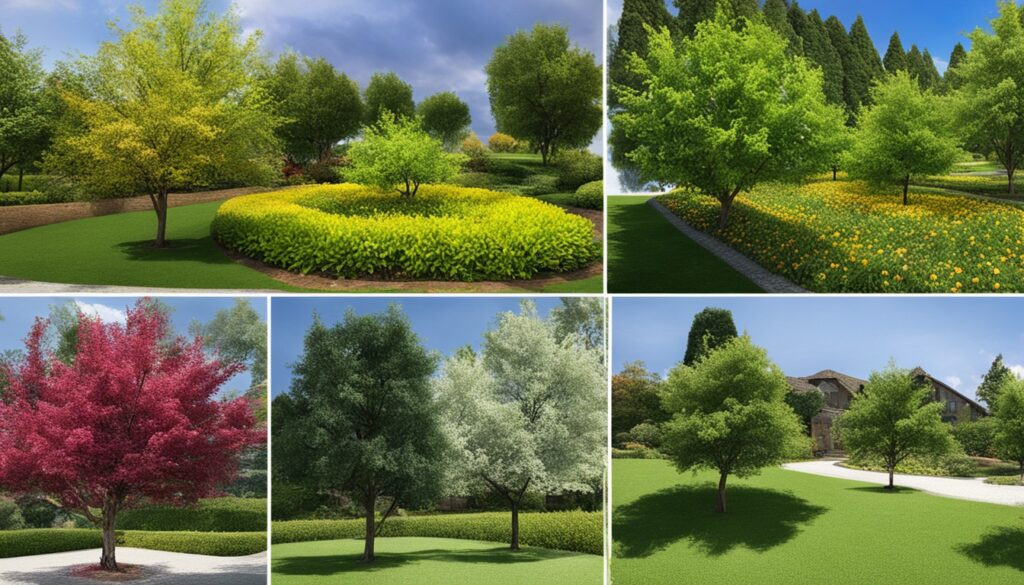
| Fruit Tree Characteristic | Importance for Beginners |
|---|---|
| Low Maintenance | Requires minimal pruning, watering, and care for new gardeners |
| Disease and Pest Resistance | Reduces the need for intensive pest and disease management |
| Favorable Climate | Ensures the tree can thrive in the local growing conditions |
Pear Trees: Ideal for Novice Gardeners
Pears are great for beginners in fruit trees. Asian pear trees are perfect for new gardeners. They are easy to care for and produce lots of fruit with little work.
Pear trees fight off many diseases that hit other fruit trees. Some types, like the Kieffer and Hood, don’t need another tree to pollinate. So, you only need one pear tree to get fruit.
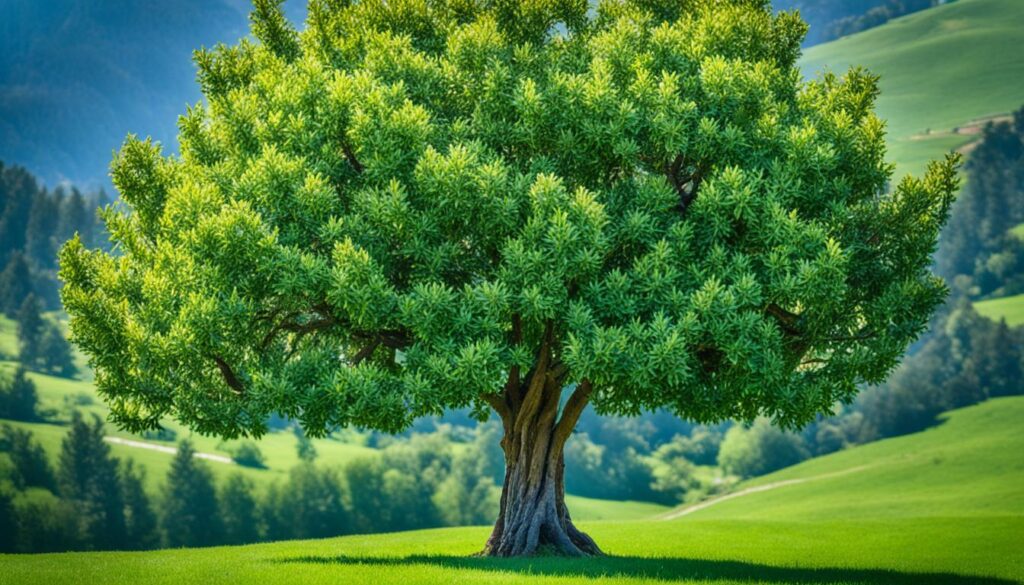
Pear trees are also very tough. They grow well in many climates, from warm to cool. This makes them great for pear trees for beginners in different areas.
If you like the taste of a Bartlett pear or the crunch of an Asian pear, these trees are for you. By picking the right self-fertile pear trees and caring for them, you can have lots of tasty pears with little work.
Plum Trees: Thriving in Various Climates
Plum trees are great for beginner gardeners. They grow well in many climates. European plum varieties don’t need another tree to pollinate them. American plum varieties are even tougher than European ones.
Drainage Requirements
When starting with plum trees for beginners, make sure the soil drains well. This stops water from building up and harming the trees. Self-fertile plum trees and American plum trees do best in soil that drains well and is slightly acidic. They need at least 6 hours of sunlight a day.

It’s important to water plum trees right for their health. Aim to give them about an inch of water each week. This depends on the soil and how well it drains. Plum trees can grow in USDA zones 4-9. They need different amounts of chill hours, fitting many climates.
Cherry Trees: Sweet and Sour Delights
Beginner gardeners can pick between sweet and sour cherry trees for their home orchard. Sweet cherries are great for eating fresh. Sour cherries are best in baked goods and preserves.
Many cherry trees don’t need another tree to pollinate. But, having two trees close together can make more fruit through cross-pollination.
| Cherry Tree Type | Best Uses |
|---|---|
| Sweet Cherry Trees | Eating fresh |
| Sour Cherry Trees | Baking and preserving |
Choosing sweet or sour cherry trees is a great choice for beginners. They add beauty and taste to any garden.
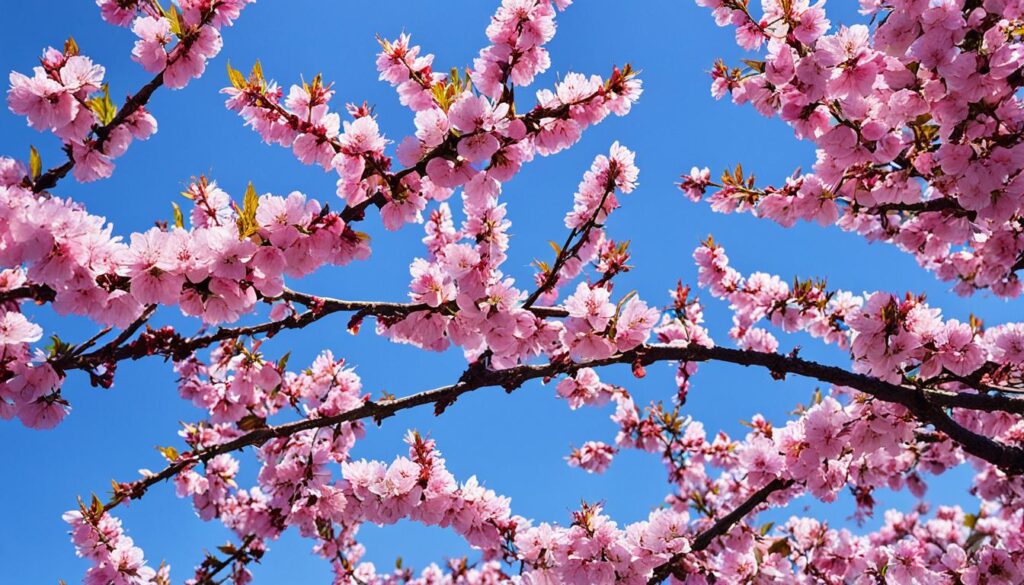
best fruit trees for beginners
Starting a fruit tree garden is great for beginners. Look for trees that are easy to care for and fit your local climate. Pear, plum, cherry, fig, and apple trees are great for new gardeners.
Pear trees are perfect for beginners. They need little care and fight off diseases well. Plum trees grow in many climates, with European and American types for different areas.
Cherry trees are great for easy growing. They produce fruit quickly and fight off diseases well. Both sweet and sour cherries are good choices.
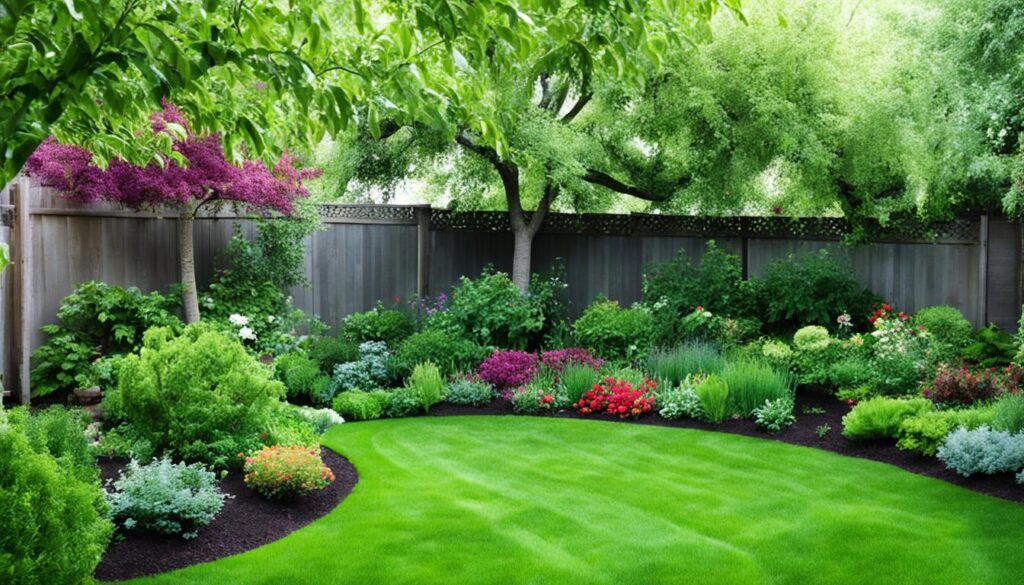
Common fig trees are easy to grow. They resist diseases, grow fast, and like hot, dry places. Many figs don’t need another tree to pollinate them.
Apple trees are a classic choice for beginners. Dwarf and self-pollinating types are perfect for small spaces or for those new to gardening.
When picking fruit trees for beginners, look for low maintenance trees that resist pests and diseases. They should also fit your local climate. With the right trees, beginners can enjoy fresh, homegrown fruit.
Common Fig Trees: Disease-Resistant and Fast-Growing
For beginner gardeners, fig trees are a great pick. They grow fast and fight off diseases easily. This makes them easy to care for in your garden.
Most fig trees, like the Brown Turkey and Celeste, don’t need another tree to pollinate. This means you can start with just one tree. They’re perfect for those new to gardening.
Fig trees love hot and dry places, making them ideal for fig trees for hot climates. The Brown Turkey fig can get quite big, while the Chicago Hardy is a bit smaller. The Celeste fig is smaller still, and the Little Miss Figgy is the smallest of all.
Self-Pollinating Varieties
Self-pollinating fig trees only need one tree to produce lots of fruit. They start giving fruit in their first year, giving beginners quick results. They can handle drought once they’re grown, but young trees need regular water.
Thriving in Hot and Arid Climates
With the changing climate, fig trees are becoming more popular. They do well in hot and dry areas, which is good for gardens facing climate change. Their resistance to disease and fast growth make them a great choice for any garden.
Apple Trees: Traditional and Reliable
Apple trees are a great pick for beginners in gardening. They come in many types, fitting your garden size and needs. You can choose from dwarf apple trees for small spaces or self-fertile apple trees for easy care.
Dwarf and Self-Fertile Options
Dwarf apple trees are great for small gardens or containers. They grow to 8-10 feet tall. They start producing fruit early and are easy to care for, perfect for new gardeners.
Self-fertile apple trees are easy for those who don’t want to worry about pollination. These trees can grow well on their own, making gardening simpler for beginners.
| Characteristic | Dwarf Apple Trees | Self-Fertile Apple Trees |
|---|---|---|
| Maximum Height | 8-10 feet | Varies by cultivar |
| Pollination | Can be self-fertile or require cross-pollination | Self-pollinating, no need for another tree |
| Planting and Maintenance | Easier to prune and harvest | Simplified planting and care |
| Ideal for | Small gardens, containers | Beginner growers |
Apple trees are perfect for beginners. They live long, produce a lot, and are easy to care for. Whether you choose dwarf or self-fertile trees, you’ll enjoy a great harvest for many years.
Mulberry Trees: Low-Maintenance Fruiting Wonders
For beginners, mulberry trees are a great pick for a garden. They need little care but give lots of tasty berries. These trees are also strong against pests and diseases, making them easy for new gardeners.
There are many types of mulberry trees, like red, white, and black. They grow from 30 feet to 80 feet tall. But they’re all easy to take care of. They grow well in many places, from USDA hardiness zones 5 to 10.
Mulberry trees fight off most pests and diseases on their own. This means you don’t have to spend a lot of time on them. Just trim some branches in July to help them grow better. Don’t cut too much to avoid bleeding.
If you’re new to gardening or want something easy, mulberry trees are perfect. They produce lots of fruit, stay healthy, and need little care. These trees are great for anyone wanting to grow their own food.
| Mulberry Tree Variety | Height | Age Expectancy |
|---|---|---|
| Red Mulberry | 30-40 feet (9-12 m) | Up to 75 years |
| White Mulberry | Up to 80 feet (24 m) | Hundreds of years |
| Black Mulberry | Up to 30 feet (9 m) | Hundreds of years |
Elderberry and Beautyberry: Native and Care-Free
For beginners, elderberry and beautyberry are great for easy, low-care fruit plants. They grow well in local conditions and need little care to thrive and produce tasty berries.
Elderberry grows in zones 3 to 9, and Beautyberry in zones 5 to 8. These plants are native and fit well with the climate and soil in many places. They are great for new fruit growers.
The Beautyberry has bright magenta berries that look a bit scary but are safe to eat. They taste mild but can be a bit dry, perfect for making jelly or wine. The leaves also keep mosquitoes away.
These plants are not only easy to grow but also teach and help the environment. Growing them lets beginners learn about their unique tastes and help local ecosystems.
Pawpaw and Persimmon: Patience Pays Off
Pawpaw and persimmon trees take more time to grow and produce fruit. But, they are great for beginners. They are easy to take care of once they grow. These fruit trees give lots of tasty, exotic fruits after a few years.
Pawpaw trees start giving fruit in 3 to 5 years. Their fruit season is from mid-August to mid-October, based on the type and where you live. Trees like Peterson Pawpaw are known for being reliable and tasty.
Persimmon trees also need patience but offer great rewards. They like rich soil that’s a bit acidic to neutral. With the right care, your trees will give you lots of delicious fruits for many years.



